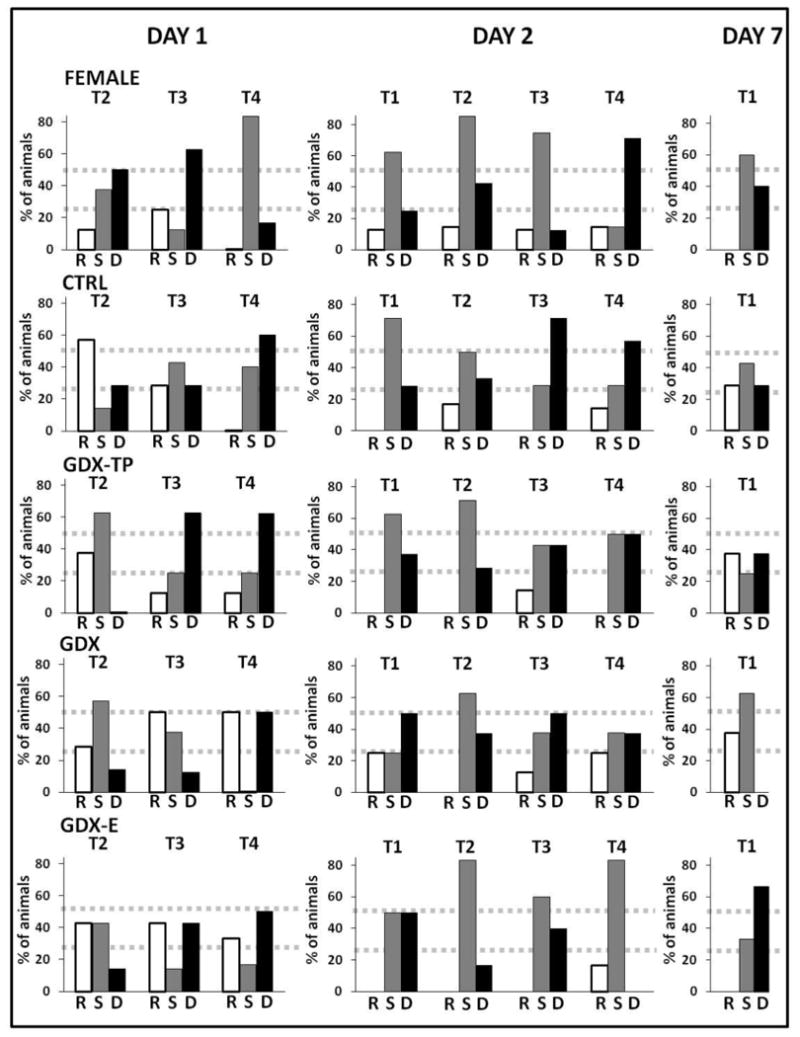Figure 6.

Bar graphs depicting percentage of animals utilizing random, serial, or direct searches for the goal across the last three trials (T2-T4) of Day 1 (acquisition), the four trials of Day 2 (retention), and the single trial of Day 7 (retention) testing. From T2 to T4 on Day 1, the percentage of control male rats (CTRL) and gonadectomized male rats supplemented with testosterone propionate (GDX-TP) utilizing primarily random searches (white bars) consistently decreased while those using serial (gray bars) or direct (black bars) searches progressively increased. By T4, the majority of CTRL and GDX-TP rats were moving directly to the goal with some rats continuing to employ serial searches and few to none performing random searches. Conversely, a large number of gonadectomized rats (GDX) and gonadectomized rats supplemented with estradiol (GDX-E) continued to demonstrate random searches from T2 through T4 with the percentage of animals doing so showing no appreciable decrease across acquisition trials. Additionally, while the number of GDX and GDX-E rats using direct searches progressively increased across trials and the number of rats performing serial searches decreased, the overall number of rats employing either of these types of searches did not change from T2 to T4. Finally, from T2 to T4, very few female rats demonstrated random searches. Most female rats used either serial or direct searches for the goal with the majority performing serial searches by T4. Across Day 2 trials, the majority of CTRL, GDX-TP, GDX, and GDX-E rats utilized either serial or direct searches with very few animals using a random search strategy while females continued to prefer serial searches. On Day 7, female and GDX-E rats maintained their navigational strategies while CTRL, GDX-TP, and GDX rats showed less retention with more rats using random searches compared to other groups. Fisher's exact tests only reached significance on Day 1, Trial 4 (p < 0.01).
